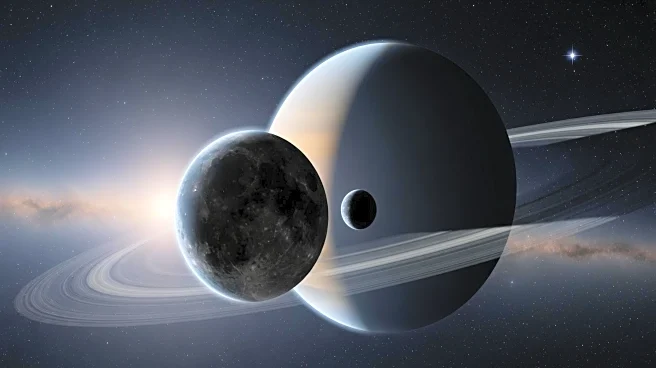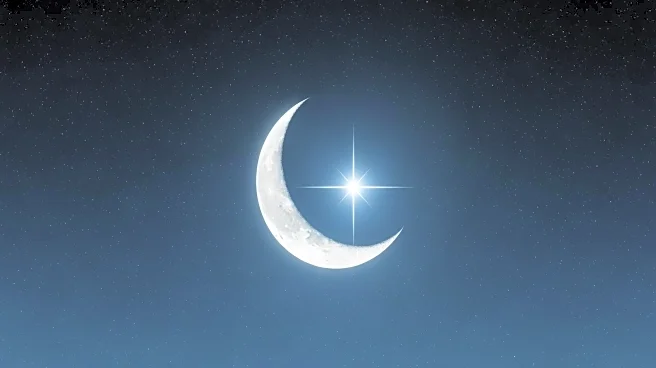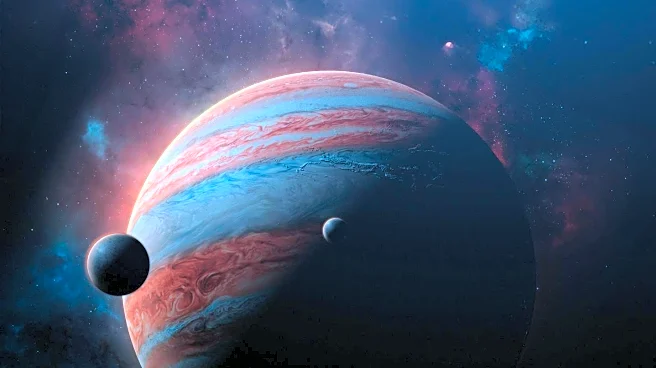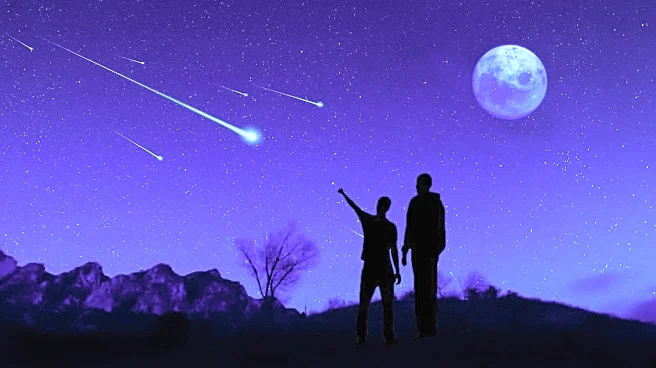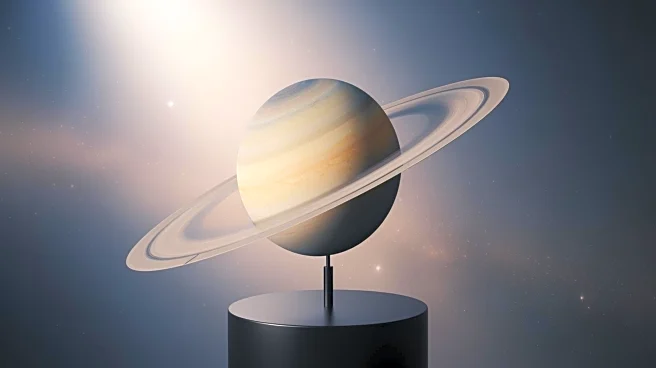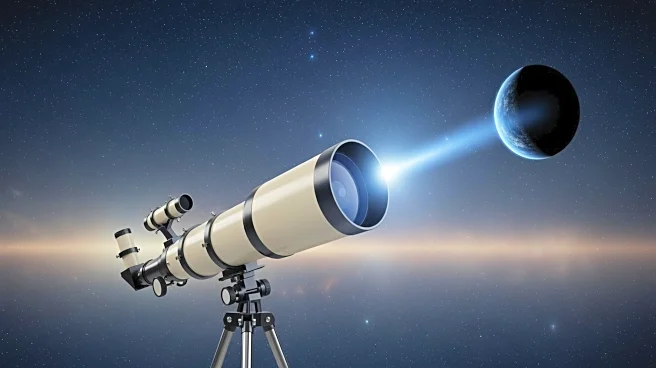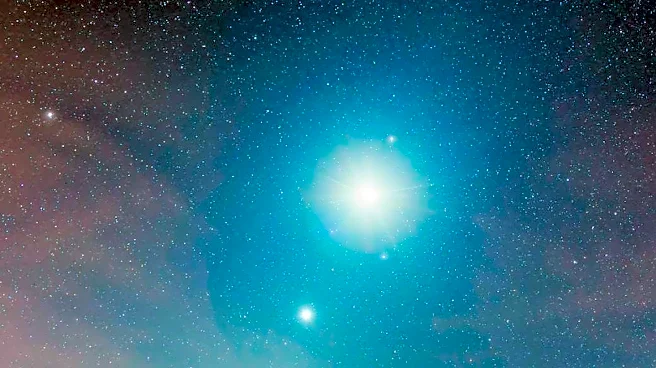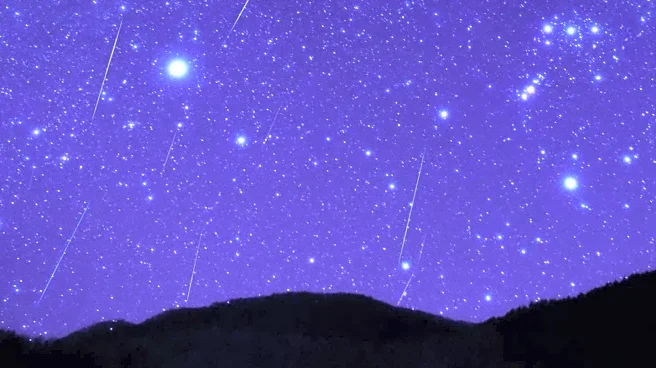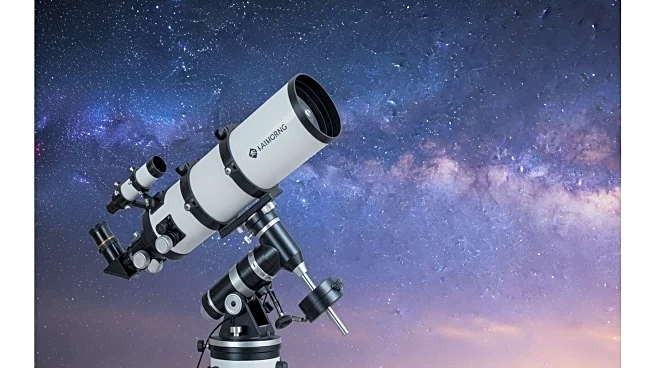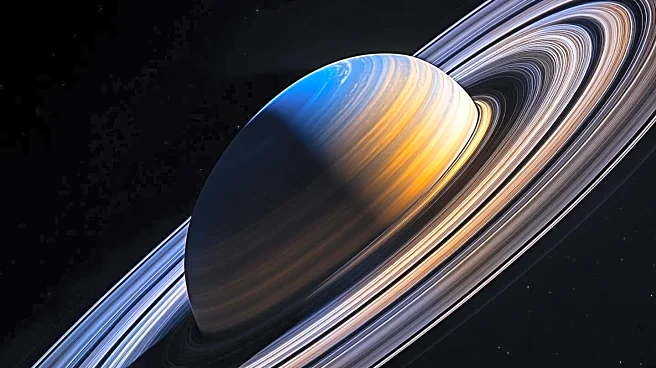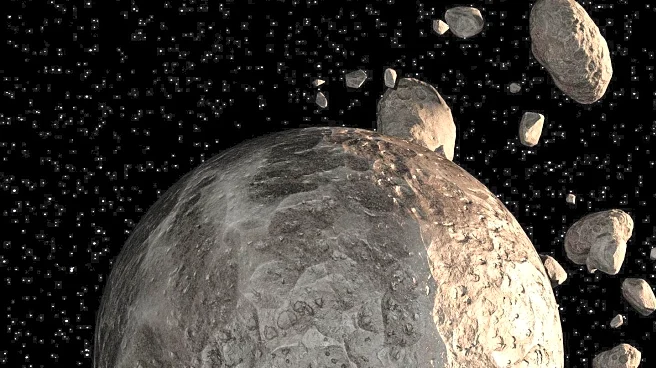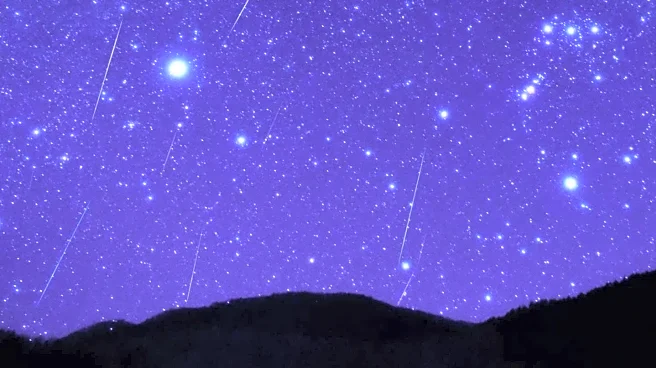What's Happening?
On October 26, 2025, Saturn's moon Iapetus reaches inferior conjunction, making it more visible as it aligns 1.3 arcminutes north of Saturn. This celestial event provides an opportunity for astronomers and enthusiasts to observe Iapetus, which is typically
elusive due to its orbit. At this time, Iapetus shines at approximately 11th magnitude, making it easier to spot near its parent planet. Saturn itself will be prominently visible in the southern sky around 10 P.M. local daylight time, with its rings stretching 43 arcseconds wide and its disk measuring 19 arcseconds across. Other moons of Saturn, such as Titan, Dione, Tethys, and Rhea, will also be observable, with their positions relative to Saturn changing throughout the night.
Why It's Important?
The visibility of Iapetus at inferior conjunction is significant for both amateur and professional astronomers, as it offers a rare chance to observe this moon in greater detail. Iapetus is known for its unique two-tone coloration and irregular orbit, which often makes it difficult to observe. This event not only enhances public interest in astronomy but also provides valuable observational data for scientists studying the dynamics of Saturn's moons. The alignment of multiple moons around Saturn during this period also allows for comparative studies of their orbits and physical characteristics, contributing to a deeper understanding of the Saturnian system.
What's Next?
Following this event, astronomers may continue to track the movements of Saturn's moons to gather more data on their orbits and interactions. Observatories and amateur astronomers are likely to share their findings and images, contributing to the collective knowledge of Saturn's satellite system. Additionally, this event may inspire further public engagement with astronomy, encouraging educational programs and outreach activities to promote interest in celestial phenomena.
Beyond the Headlines
The observation of Iapetus and other Saturnian moons during this conjunction highlights the importance of celestial events in fostering scientific curiosity and education. It underscores the role of astronomy in connecting people with the universe and encouraging a broader appreciation for the complexities of planetary systems. Such events also emphasize the need for continued investment in astronomical research and technology to enhance our understanding of the cosmos.
